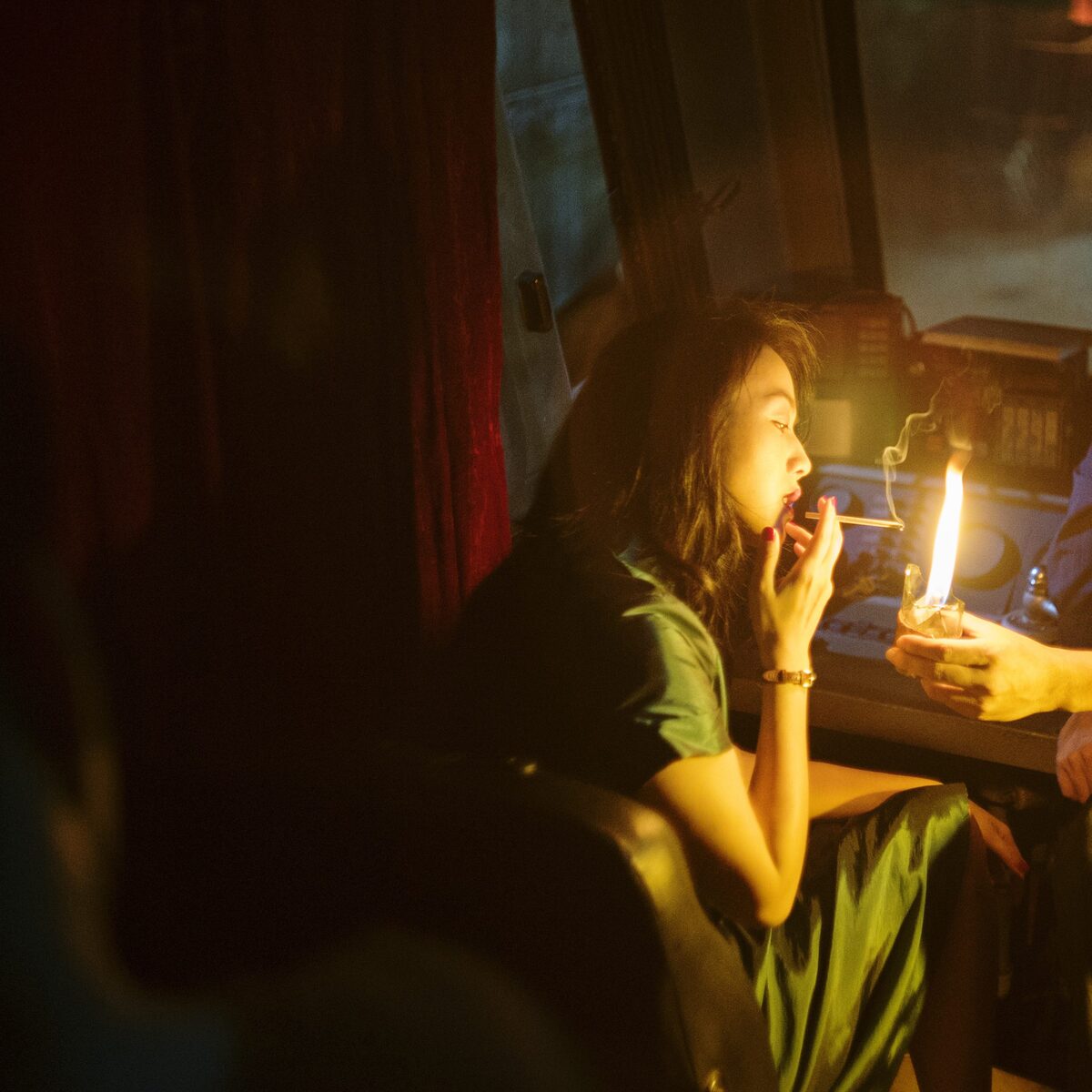
Long Day’s Journey Into Night
directed by Bi Gan
starring Huang Jue, Tang Wei, and Sylvia Chang
In his impressive debut feature, Kaili Blues, Bi Gan told a story in two halves of a formerly incarcerated doctor who goes on a journey through the countryside of Guizhou in search of his nephew, who has been sold to a watchmaker. In that film, Gan conveys the meaning of the words in the Sutra he presents by defying the restrictions of time itself in the storytelling process, allowing for a freedom in movement and image to ascend past conventional narrative and structure. Like Kaili Blues, Bi Gan’s alluring and immensely enjoyable latest feature, Long Day’s Journey Into Night is also divided into two segments, with each distinctively challenging our understanding of time, narrative, and character to setup a contrast that dares us to unravel all of our notions of cinema, storytelling, memory, and experience.
The first part of the film spans a timeline between the year 2000 and present day that begins with Luo Hongwu (Huang Jue) returning to his mountain hometown of Kaili for his father’s funeral. Here, Luo unrelentingly searches for the woman whom he once loved, Wan Quiwen (Tang Wei), beginning his quest after he finds a photo of her behind an old clock. As the memories of their relationship are recalled in a fragmented manner that purposefully confuses the sequence of events and the past and present identities of the characters in a nod to Apichatpong Weerasethakul’s Syndromes and a Century, Gan plays with the clock to create an element of uncertainty in the viewers’ perception of the real and the unreal.
Through a pastiche of scenes that seem all too familiar, Gan playfully utilizes cinematic language primarily through tropes found in Hitchcock’s Vertigo that could be seen as homage, but serve more importantly as references that force us to draw from our memories of moments and characters in Vertigo and other film noirs so deeply embedded in our consciousness, to take us further away from the story that we are witnessing on our own, leading us to distort our interpretation of the main narrative with our recall of similar images and how they impacted us.
Gan also starkly employs color to pull us between the world he creates and the world he knows we imagine, seen most evidently in the choice of the green dress that Quiwen wears, evoking memories of Kim Novak while blending Quiwen into the natural surroundings, making manifestations of her appear like hallucinatory events that further the misinterpretation of real moments through potentially clouded, passed memories. As the flashbacks of Luo and Quiwen’s troubled, violent beginnings are deliberately obfuscated by Gan using the aforementioned approaches, what remains for the viewer is a sharp comment on the role that the police and restrictive government has played during the elapsed era between Luo and Quiwen’s affair at the beginning of the millennium and today.
Apart from the delivery of the crucial political comment realized in the first half of Long Day’s Journey Into Night, what that section of the film establishes is an important setup for the much heralded 3D tracking shot that sends Luo after he wakes up (or perhaps doesn’t wake up) in a movie theater on a new journey under tunnels, down cables, through Kaili as he further searches for Quiwen. In the second half, Gan examines the same themes as the first, the same characters, the same moments with a somewhat similar approach by referencing his own tracking shot in Kaili Blues, but while we are thinking about that great accomplishment in Kaili Blues or are paralyzed by our awe that such a continuous tracking shot is happening, Gan forms a different, clearer visual aesthetic that sends us into a dream state where the weaving of memories into the dream takes an oddly linear form, free of the impediments caused by the natural stimuli response and activation encountered in a conscious state.
As much as the first part of the film utilizes cinematic tropes and symbols, narrative construction, and memory recollection to assemble the characters’ disjointed realities, the second part of the film strips away all of that and becomes purely an experience, one that is languid and trance-like, but is perhaps the truest way that we navigate psychological representations assembled from reality, and in turn may be the way we interpret and understand reality itself. Whereas Godard’s recent film, The Image Book, addresses the failure of cinema to capture reality because the medium’s conventions are antithetical to reality with jarring images and sounds in an entirely experimental framework, Long Day’s Journey Into Night addresses this same conundrum with the contrast between the two parts of the film. The continuous shot that forms the second part of the film feels documentary-like, but the moment we are reintroduced to Quiwen as a new character, we start to see how the dream can emphasize the real, resembling how we reimagine people in our lives, places we’ve seen, and ultimately ourselves in our dreams. If the first part of the film presents reality in constructed, contained moments in non-linear order like how we recall our memories, then the second part of the film explains how we intuitively, instinctively perceive all of those moments when we travel to the deepest parts of our unconscious mind and explore. ◼
Long Day’s Journey Into Night opens in New York at the Metrograph and Film Society Lincoln Center on April 12th and in Los Angeles at The Landmark on April 19th.












